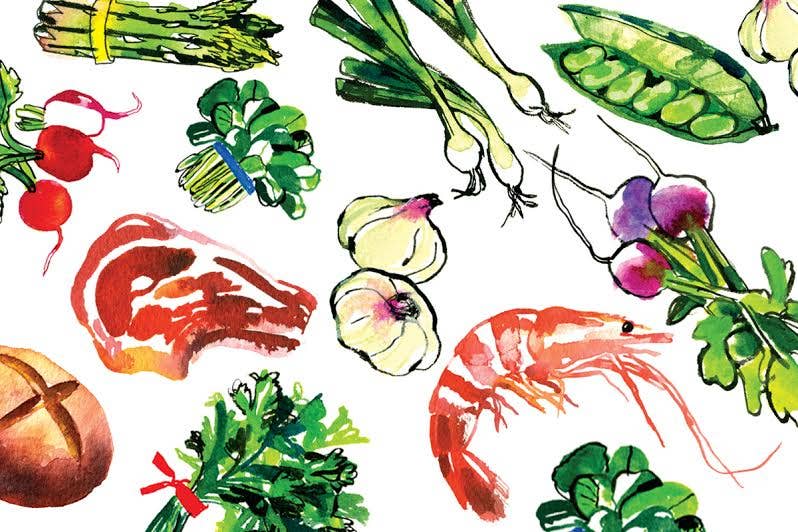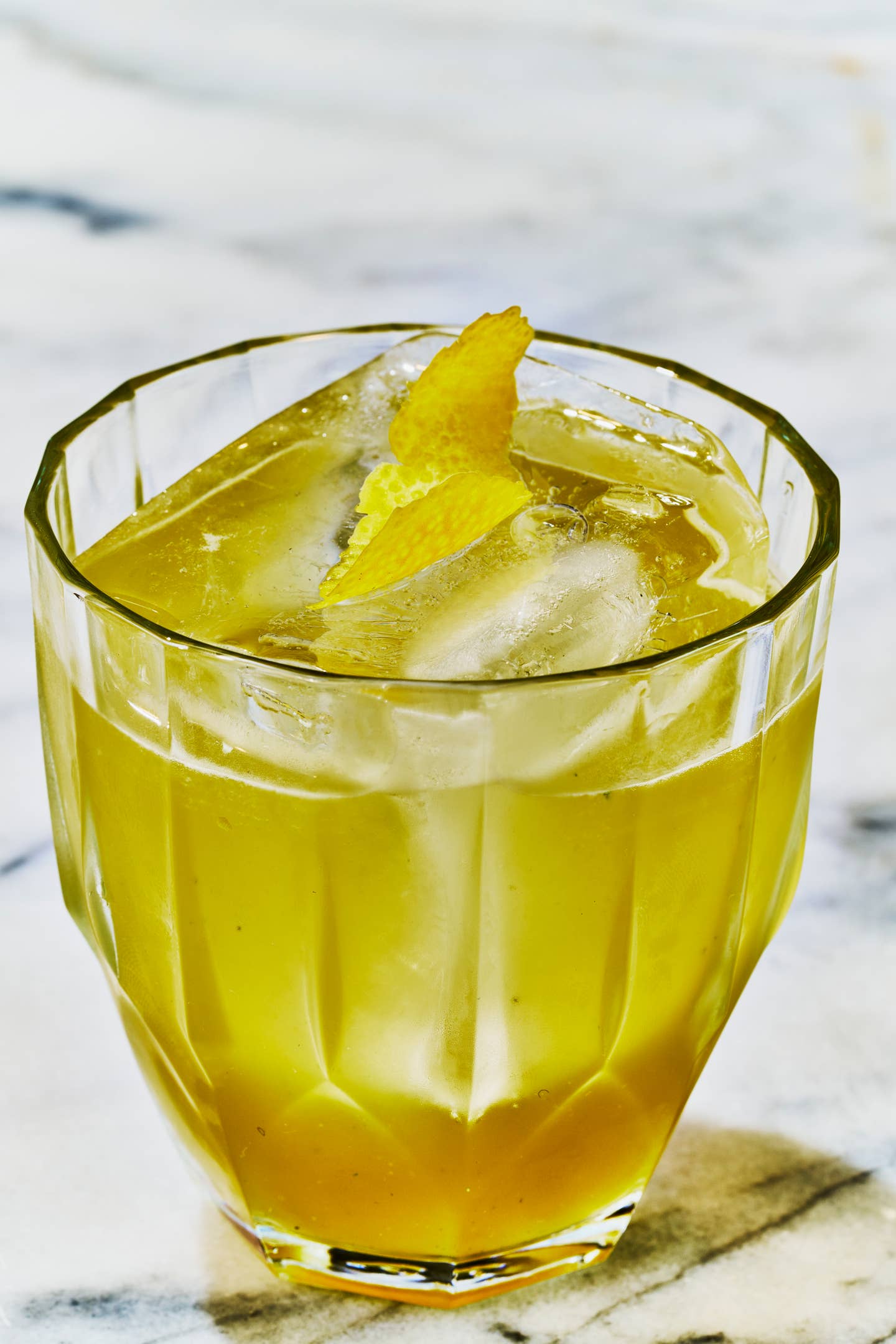
American Originals
As a student of 19th-century American mixology, I've often come across old drink recipes calling for things like "still Catawba" and "sparkling Isabella"—wines made from native American grape varieties traditionally grown east of the Rocky Mountains. But when I went looking for such oenological Americana in stores, the only things even remotely close to them came in pint-size, screw-top bottles. If there ever were good wines made in America's heartland, I concluded, they didn't make it past Prohibition. Well, I was wrong.
To explain why, I should back up a bit. When Englishmen began settling in North America, they found that grapevines grew wild almost everywhere. Unfortunately, the wine they immediately began making from the wild vines they found tasted awful: sour, vegetal, musky—a complex of flavors that came to be known as "foxy". (Early settlers called the American grapes fox grapes, apparently because of the perceived resemblance of their aroma to that of a fox's musk.)
Perhaps, as English botanist Thomas Harriot wrote in 1588, if the wild vines were "planted and husbanded as they should be", they would yield good wine. Accordingly, some men who knew the business were lured over from France and Germany, the English having experience neither with planting the vine nor with husbanding it. Alas, when the wine they made was sent back to England, in 1622, it proved to be "rather of scandal than credit" to the colony, as one of the enterprise's backers wrote. Upon closer examination, it turned out that America didn't just have lots of grapevines; it had lots of different species of them—and none of them Vitis vinifera, the one from which people in Africa, Asia, and Europe had been making drinkable wine for millennia. The next step was obvious: if the native grapes didn't work, why not plant European vines of proven worth?
But no matter which old-world variety was tried, it simply would not grow here. If leafhoppers, berry moths, or phylloxera aphids didn't get the vines, black rot, downy mildew, or bacterial infection did. Moreover, America's winters were too cold for the southern European vines and its summers too hot for the northern ones. Our native vines had adapted to meet the challenges; the immigrant strains were defenseless.
Although it took a while to recognize the fact, a solution was discovered in 1740, when Pennsylvanian James Alexander tried replanting a grapevine he found growing near a failed vinifera vineyard. Alexander's find not only survived; it also produced a "burgundy" that was "much admired by all that tasted it". An accidental cross between a vinifera vine and a native one, Alexander's hybrid possessed desirable characteristics of both.
That hybrid, which came to be known as the alexander, was joined, and quickly surpassed, by the isabella in 1816, the norton in 1820, the catawba three years later, and, eventually, some 2,000 others. In the years right before the Civil War, the combination of viable varieties, heavy immigration from wine-rich Germany, and cheap land in the Midwest meant that the U.S.A. was pouring forth a relative flood of wine. In 1860, the country produced more than a million and a half gallons of it, a third of it coming from Ohio alone. For the first time, wines made from grapes with American DNA were satisfying discriminating drinkers in New York, Washington, Boston, and even, at long last, London.
But the outlook wasn't entirely rosy for American grapes. For one thing, the hybrids were delicate. Worse, by 1860 more than one-sixth of America's wine came from California, where the vines were almost entirely imported vinifera. The mountains and deserts that separated the West from the rest of the continent also held at bay the pests and plagues that killed European vines. With the cachet this gave California wines and the ever increasing yields its vineyards enjoyed, heartland American wine felt the dagger slide in at its very moment of triumph. By the time Prohibition was enacted, in 1920, the Midwestern wine industry was practically dead.
After Prohibition's repeal, few of the Midwestern wineries reopened. Stone Hill Winery in Hermann, Missouri, once the country's second-largest winery, became a mushroom farm. With the Depression and World War II, there was little interest in making fine wine. But then came the 1960s, with their back-to-the-land, handmade philosophies—philosophies that looked kindly on the ancient craft of winemaking. A healthy crop of small winegrowers sprouted to meet a new demand, and not just in California. In 1965, for instance, Jim and Betty Held, who had been raising corn and hogs and a few catawba grapes to sell out of state, bought Stone Hill. It was a winery once again. Others followed.
Today, all but unnoticed on either coast, the old winemaking regions of northern Ohio and central Missouri are back in business, making serious wines out of heirloom hybrids such as catawba and norton and newer ones such as chambourcin and seyval. In fact, you can find small wineries growing American hybrid varieties all over the heartland, from Klingshirn Winery in Ohio, founded right after repeal, to the Holy-Field Vineyard & Winery in Kansas, established in 1980 by a former hair salon owner and his daughter, and Missouri's Adam Puchta Winery, founded in 1855 and revived by Puchta's great-great-grandson in 1990. In 1980, a significant part of Missouri's wine-growing "Rhineland" was declared an American Viticultural Area, a geographical pedigree akin to France's Appellation d'Origine Controlee.
Having secured some two dozen of these Midwestern hybrid wines—catawbas, niagaras, vignoles, and traminettes for the whites, nortons and chambourcins for the reds—it was with a mixture of trepidation and anticipation that I sat down to taste them. A few were simply badly made, the way bad wines from anywhere can be: overoaked, thin, acidic. But there was another handful that, had their labels been switched, would have passed themselves off quite handily as obscure German whites or French country reds. The remaining examples were well balanced, of sturdy body, and with sophisticated (which is to say low) sugar levels. Good wines. But, well, odd. I found myself leaning on unconventional descriptors such as "tomato vine" and "baked potato" and even "Vaseline" (then again, German rieslings are often said to have "petroleum" notes). But, I repeat, these are good wines. The odd notes are merely that: notes.
Though most of these wines aren't yet available outside the Midwest, those I tasted convinced me that one day, not too far off, you'll be able to walk into your local wine shop and pick up a fine bottle of Kansas chambourcin or Missouri norton. "In recent years there's been an explosion of wineries outside the coastal, wine-producing states," says the Missouri-based wine consultant Doug Frost, "and most of them are working with non-vinifera grapes." It took millennia of patient labor for vinifera grapes to yield fine wine. But after a mere 300 years of husbandry, when American winemakers were just learning to tease out the particular virtues of their native vines, the process was yanked to a halt. Now it's under way again, giving us truly American wine. Finally.
Keep Reading
Continue to Next Story










